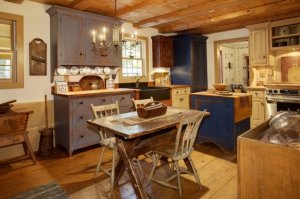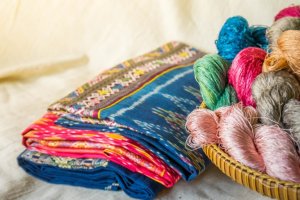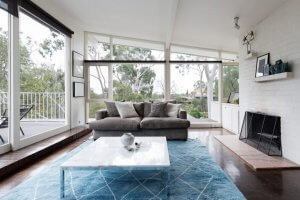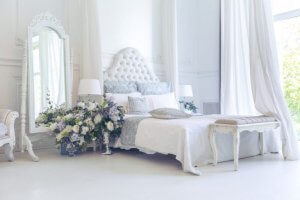A Dictionary for People Who Love All Things Decor

We know you love to keep up with the latest trends, keep your house looking great, read decor magazines, and spend hours and hours on our blog. But we might not always be so easy to understand when we get serious and pull out our fancy words. So, we’ve made a dictionary for those of you who love decor, to help clear things up.
The decor dictionary
First, from A to I
Anchors: these are a kind of wall screw used for hanging up heavy objects and keep them from falling.
Baseboard: this is a piece that runs along the bottom of your wall, protecting it from damage when you move furniture, etc.
Bargueño desk: this is an antique Spanish portable desk. It looks like a chest with cabinets and handles on the sides, so you can also use it for storage.
Capitoné: this is a kind of upholstery where the fabric is held in place by buttons that form rectangular patterns. It was very common in the 16th century.

Demijohn: a spherical glass jug. You may also see ceramic or clay versions. They generally have a wicker cover to make them more stable and easy to use. Here’s an article about how to decorate with them!
Entryway: this is the first room in a house, the space right behind your front door. Depending on the style of your home, it may be long and narrow, or wide, and tall, with a chandelier.
Frieze: a horizontal strip of tiles, fabric, wallpaper, plaster, etc, that you use to protect the bottom or top part of a wall. It generally has a decorative purpose too, with patterns or reliefs to make it look nice.
Greige: how could our dictionary for decor lovers not include this new color? It’s a mix of grey and beige.
Herringbone: this is a pattern most common in flooring, with zig-zagging rectangles or parallelograms. It gets its name from the bones of the herring fish.
Ikat: we’re sure you’ve never heard this one before. This is an Indonesian decorative technique where they tie-dye threads before weaving them together.

Now, from J to M
Jamb: this is the frame that goes around your doorways to make sure that it has support.
Kilim: a handcrafted Arabic rug. They weave it together like a tapestry, but much smaller. These generally have geometrical patterns and vivid colors.
Kitsch: a style that uses tacky, unstylish things as decor elements.
Lagom: a Swedish design philosophy about living simply, with practical, orderly, pretty decorations. It’s a lot like minimalism.
Mid-century: this is a decor style from the 50s, with a focus on lines, serious colors, natural materials, and geometric shapes.

From O to S
Ormolu: this word comes from the French term or moulu. It’s about the 18th and 19th-century process of using pounded or powdered gold to gild bronze objects.
Patina: a thin layer that forms on wooden and metal furniture. It gives the furniture an aged, vintage look.
Rustic: a decorative style that involves using natural materials like wood, wicker, esparto, etc. It makes for warm, inviting spaces.
Shabby chic: a style that involves putting in antique, restored furniture. These pieces are usually worn down or have a patina but don’t look old. Shabby chic combines that with more current, more sophisticated decorations. Here’s some more info about this trend!

Lastly, from T to Z
Sadly, this is the last section of our decor dictionary. But it also has some fascinating entries, so keep reading!
Toile de jouy: this is a kind of cotton fabric with a complex pattern (nature, flowers, etc) in one color, like black, dark red, and blue. The pattern is printed on a white, or off-white cotton fabric used for curtains and upholstery.
Verdigris: this is the name for the green-bluish color that copper turns when it oxidizes. You can also achieve the same effect by applying acetic acid to a copper plate. It’s common with restored furniture.
Windowsill: this is the bottom part of the window, with the small ledge that juts out. Think of that part of a window cats love to sit on.
Yurt: a kind of traditional tent from Turkey and Mongolia. Nowadays people are installing these large, round tents in their backyards and gardens as a space for relaxation.
Zen garden: a sanded area generally outside the house, with various stones in it. The point is to use large rakes or combs to move the sand and stones around and make pleasant patterns, as a form of relaxation and meditation.
So, that was our (almost) A-Z decor dictionary. Did you learn a lot of new words? Is there anything we should have added? Let us know!
We know you love to keep up with the latest trends, keep your house looking great, read decor magazines, and spend hours and hours on our blog. But we might not always be so easy to understand when we get serious and pull out our fancy words. So, we’ve made a dictionary for those of you who love decor, to help clear things up.
The decor dictionary
First, from A to I
Anchors: these are a kind of wall screw used for hanging up heavy objects and keep them from falling.
Baseboard: this is a piece that runs along the bottom of your wall, protecting it from damage when you move furniture, etc.
Bargueño desk: this is an antique Spanish portable desk. It looks like a chest with cabinets and handles on the sides, so you can also use it for storage.
Capitoné: this is a kind of upholstery where the fabric is held in place by buttons that form rectangular patterns. It was very common in the 16th century.

Demijohn: a spherical glass jug. You may also see ceramic or clay versions. They generally have a wicker cover to make them more stable and easy to use. Here’s an article about how to decorate with them!
Entryway: this is the first room in a house, the space right behind your front door. Depending on the style of your home, it may be long and narrow, or wide, and tall, with a chandelier.
Frieze: a horizontal strip of tiles, fabric, wallpaper, plaster, etc, that you use to protect the bottom or top part of a wall. It generally has a decorative purpose too, with patterns or reliefs to make it look nice.
Greige: how could our dictionary for decor lovers not include this new color? It’s a mix of grey and beige.
Herringbone: this is a pattern most common in flooring, with zig-zagging rectangles or parallelograms. It gets its name from the bones of the herring fish.
Ikat: we’re sure you’ve never heard this one before. This is an Indonesian decorative technique where they tie-dye threads before weaving them together.

Now, from J to M
Jamb: this is the frame that goes around your doorways to make sure that it has support.
Kilim: a handcrafted Arabic rug. They weave it together like a tapestry, but much smaller. These generally have geometrical patterns and vivid colors.
Kitsch: a style that uses tacky, unstylish things as decor elements.
Lagom: a Swedish design philosophy about living simply, with practical, orderly, pretty decorations. It’s a lot like minimalism.
Mid-century: this is a decor style from the 50s, with a focus on lines, serious colors, natural materials, and geometric shapes.

From O to S
Ormolu: this word comes from the French term or moulu. It’s about the 18th and 19th-century process of using pounded or powdered gold to gild bronze objects.
Patina: a thin layer that forms on wooden and metal furniture. It gives the furniture an aged, vintage look.
Rustic: a decorative style that involves using natural materials like wood, wicker, esparto, etc. It makes for warm, inviting spaces.
Shabby chic: a style that involves putting in antique, restored furniture. These pieces are usually worn down or have a patina but don’t look old. Shabby chic combines that with more current, more sophisticated decorations. Here’s some more info about this trend!

Lastly, from T to Z
Sadly, this is the last section of our decor dictionary. But it also has some fascinating entries, so keep reading!
Toile de jouy: this is a kind of cotton fabric with a complex pattern (nature, flowers, etc) in one color, like black, dark red, and blue. The pattern is printed on a white, or off-white cotton fabric used for curtains and upholstery.
Verdigris: this is the name for the green-bluish color that copper turns when it oxidizes. You can also achieve the same effect by applying acetic acid to a copper plate. It’s common with restored furniture.
Windowsill: this is the bottom part of the window, with the small ledge that juts out. Think of that part of a window cats love to sit on.
Yurt: a kind of traditional tent from Turkey and Mongolia. Nowadays people are installing these large, round tents in their backyards and gardens as a space for relaxation.
Zen garden: a sanded area generally outside the house, with various stones in it. The point is to use large rakes or combs to move the sand and stones around and make pleasant patterns, as a form of relaxation and meditation.
So, that was our (almost) A-Z decor dictionary. Did you learn a lot of new words? Is there anything we should have added? Let us know!







